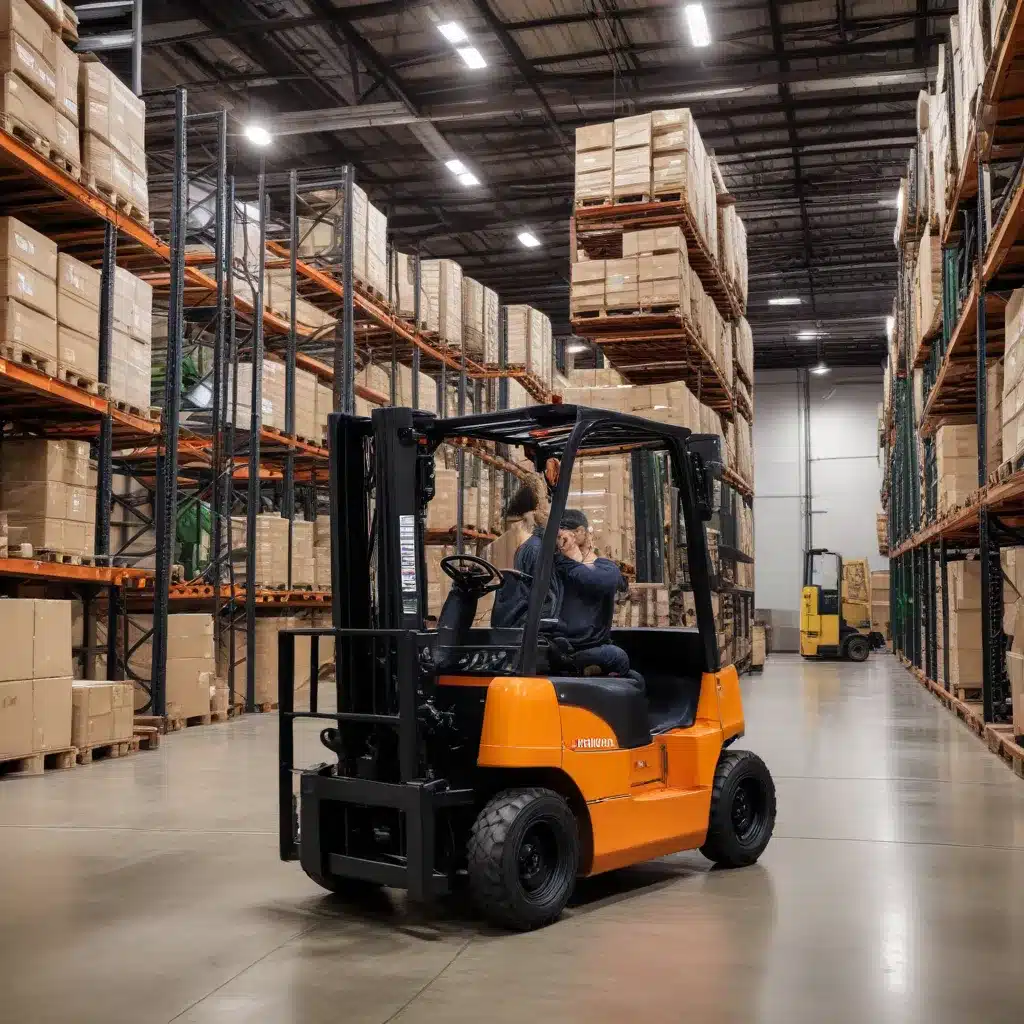
The Forklift Landscape: Navigating Modernization and Resilience
In today’s fast-paced world, where operational efficiency and adaptability are crucial, forklift fleet management has become a critical component of any successful warehousing, logistics, or material handling operation. As facility managers and supply chain leaders navigate the complex terrain of modernizing their material handling capabilities while ensuring operational resilience, the decision to lease or buy forklifts takes on heightened importance.
Facility Modernization: Embracing Technological Advancements
The pressure to modernize facilities and upgrade equipment is driven by several key factors. Firstly, the rapid pace of technological innovation in the forklift industry has introduced a wide range of advanced features, from intelligent diagnostic systems to enhanced safety capabilities and energy-efficient power sources. By embracing these advancements, organizations can enhance productivity, reduce operating costs, and ensure compliance with evolving industry standards and regulations.
Moreover, the growing emphasis on sustainability and environmental responsibility has led many organizations to prioritize the adoption of eco-friendly forklift solutions, such as electric or hybrid models. Aligning with the government’s sustainability goals, these investments not only contribute to reducing carbon footprints but also position companies as industry leaders in green practices.
Operational Resilience: Adapting to Uncertainty
In the wake of disruptive events, such as the COVID-19 pandemic, supply chain disruptions, and natural disasters, the concept of operational resilience has gained greater prominence. Businesses must now be prepared to adapt and respond quickly to unexpected challenges, ensuring the continuity of their material handling operations.
As organizations reconsider their reliance on cloud-based services and explore a return to on-premise solutions, the flexibility and scalability of forklift fleets become crucial. The ability to rapidly adjust fleet size, upgrade equipment, and maintain operations during disruptions can make the difference between weathering a crisis and succumbing to it.
Leasing vs. Buying: Weighing the Advantages
When it comes to forklift acquisition, organizations must carefully consider the merits of leasing versus buying to align with their modernization and resilience strategies.
Leasing Advantages
Flexibility and Adaptability: Leasing forklifts allows organizations to easily scale their fleets up or down as operational needs change, without the burden of long-term ownership. This agility is particularly valuable in volatile or unpredictable market conditions, where the ability to quickly respond to fluctuations in demand can provide a competitive edge.
Access to the Latest Technology: Leasing agreements often provide organizations with the opportunity to regularly upgrade their forklift fleet, ensuring access to the latest technological advancements. This helps businesses stay ahead of the curve and maintain a modern, efficient material handling operation.
Predictable Expenses: Leasing forklift fleets typically involves fixed monthly payments, which simplifies budgeting and financial planning. This predictability can be especially beneficial for organizations seeking to optimize their cash flow and avoid the large upfront capital investment associated with purchasing forklifts.
Maintenance and Service: Many forklift leasing providers include comprehensive maintenance and service packages as part of their offerings. This can alleviate the burden of in-house maintenance, allowing organizations to focus on their core business activities while ensuring their forklifts are well-maintained and reliable.
Purchasing Advantages
Long-term Cost Savings: While the initial investment in purchasing forklifts may be higher, the long-term cost savings can be substantial. Over the lifespan of the equipment, the total cost of ownership for purchased forklifts is often lower than the cumulative leasing fees.
Asset Ownership: Purchasing forklifts allows organizations to maintain complete control and ownership of their material handling assets. This can be particularly advantageous for businesses with long-term operational plans or those seeking to build a robust, company-owned fleet.
Customization and Personalization: Forklift buyers have the flexibility to tailor their equipment to specific operational requirements, including custom features, attachments, or modifications. This level of customization can optimize productivity and efficiency in unique applications or environments.
Resale Value: Owned forklifts can be resold at the end of their useful life, potentially recouping a portion of the initial investment. This can provide an additional financial benefit that is not available with leased equipment.
Aligning Forklift Acquisition with Modernization and Resilience
When evaluating the lease vs. buy decision, organizations must carefully consider how their forklift acquisition strategy aligns with their broader facility modernization and operational resilience objectives.
Modernization-Focused Approach
For organizations prioritizing facility modernization and the adoption of the latest forklift technologies, leasing may be the preferred option. The ability to regularly upgrade and access advanced features can help maintain a competitive edge and ensure compliance with evolving industry standards.
By leveraging the GSA’s Multiple Award Schedule (MAS) program, organizations can efficiently procure leased forklift solutions that meet their specific needs. The MAS program provides access to a wide range of commercial products and services at pre-negotiated prices, streamlining the acquisition process and ensuring cost-effectiveness.
Resilience-Focused Approach
For organizations seeking to build long-term operational resilience, purchasing forklifts may be the more suitable choice. Owning the equipment outright can provide greater control, customization, and the ability to maintain a stable, reliable fleet that can withstand disruptions.
In this context, the McKinsey & Company’s recommendations on reimagining operational resilience become particularly relevant. By investing in owned forklift assets, organizations can better adapt to unexpected events, scale their operations as needed, and maintain a robust material handling infrastructure to support their long-term business objectives.
Striking the Right Balance
Ultimately, the decision to lease or buy forklifts should be a strategic one, carefully aligned with the organization’s broader goals and priorities. By considering the unique advantages of each approach and striking the right balance between modernization and resilience, businesses can optimize their material handling operations and position themselves for long-term success.
Organizations should engage with experienced industry experts, such as the team at Forklift Reviews, to navigate the complexities of forklift acquisition and develop a tailored strategy that meets their specific needs. By leveraging industry insights, best practices, and the comprehensive procurement solutions offered by the GSA, businesses can make informed decisions that drive efficiency, sustainability, and operational agility.

